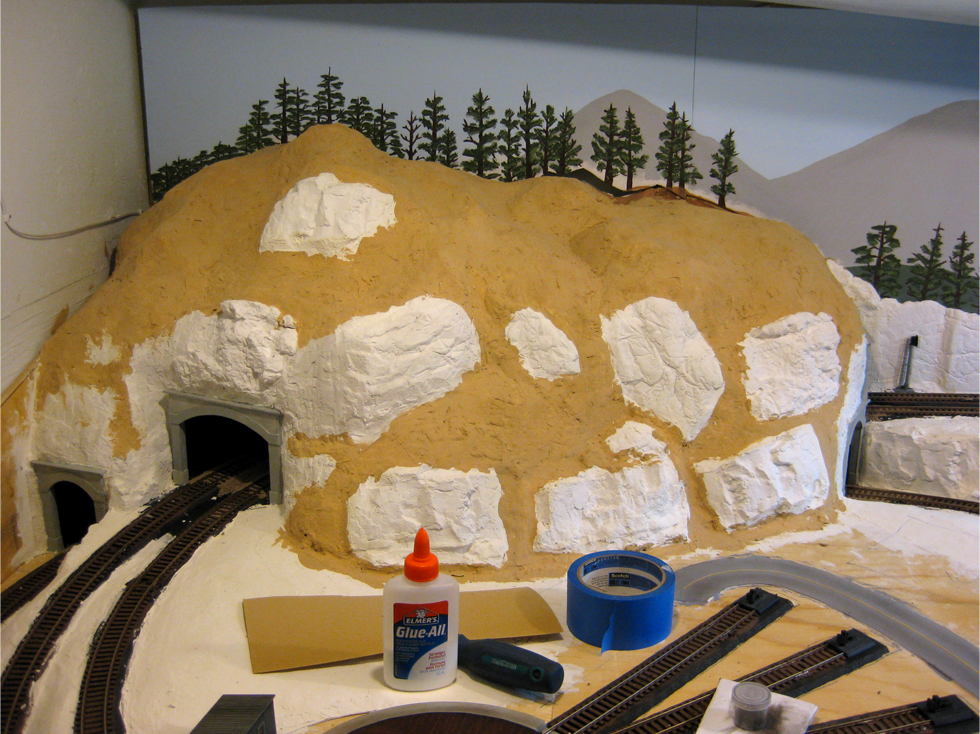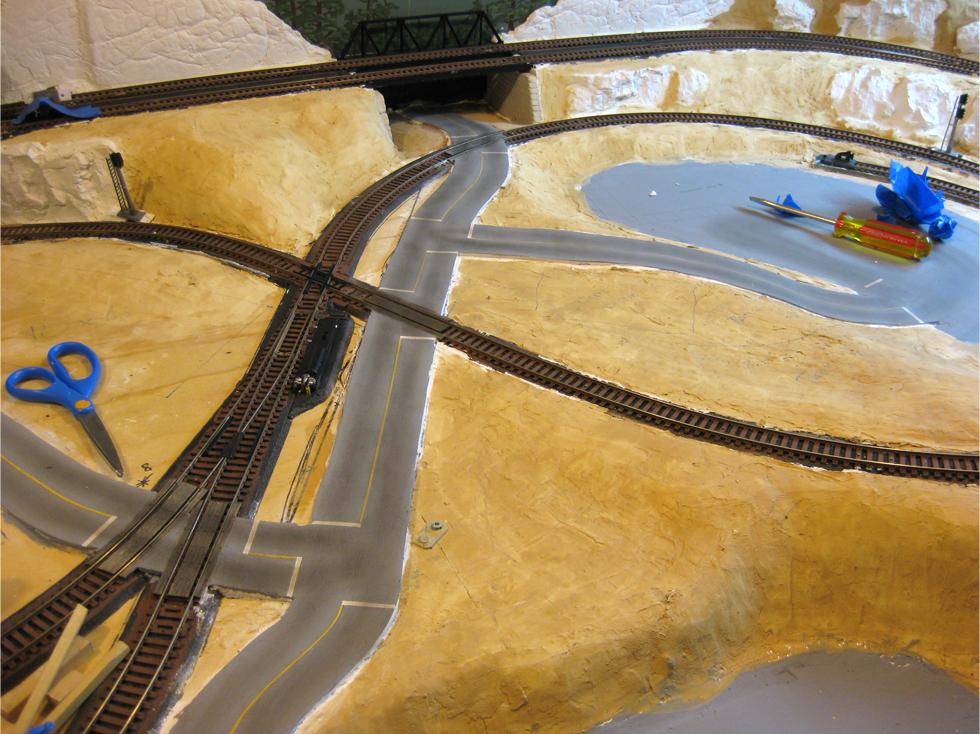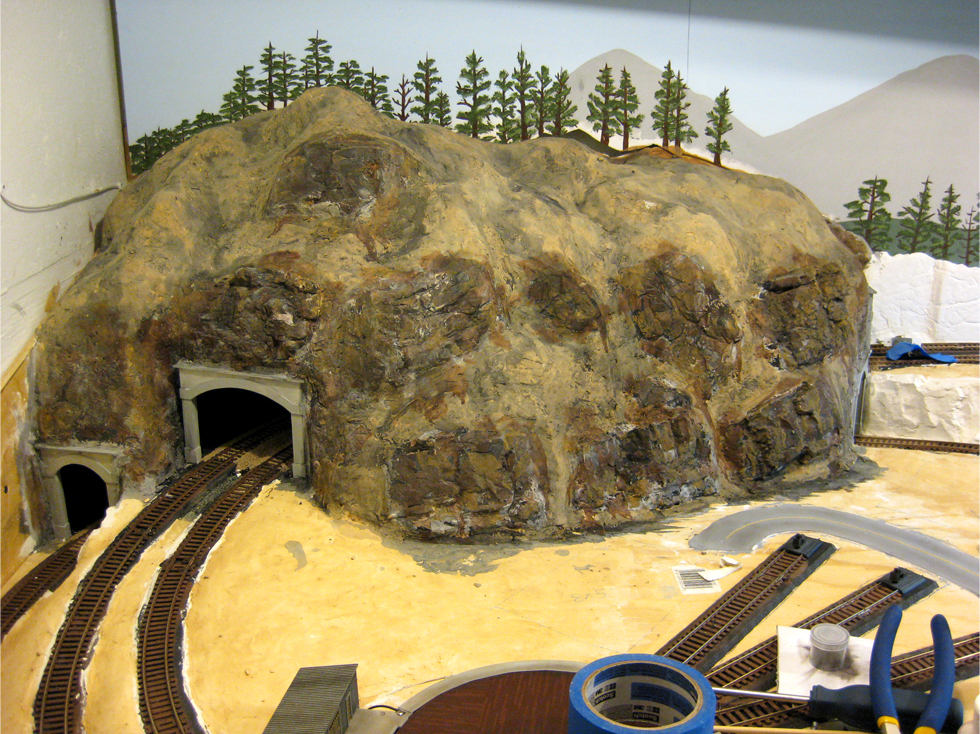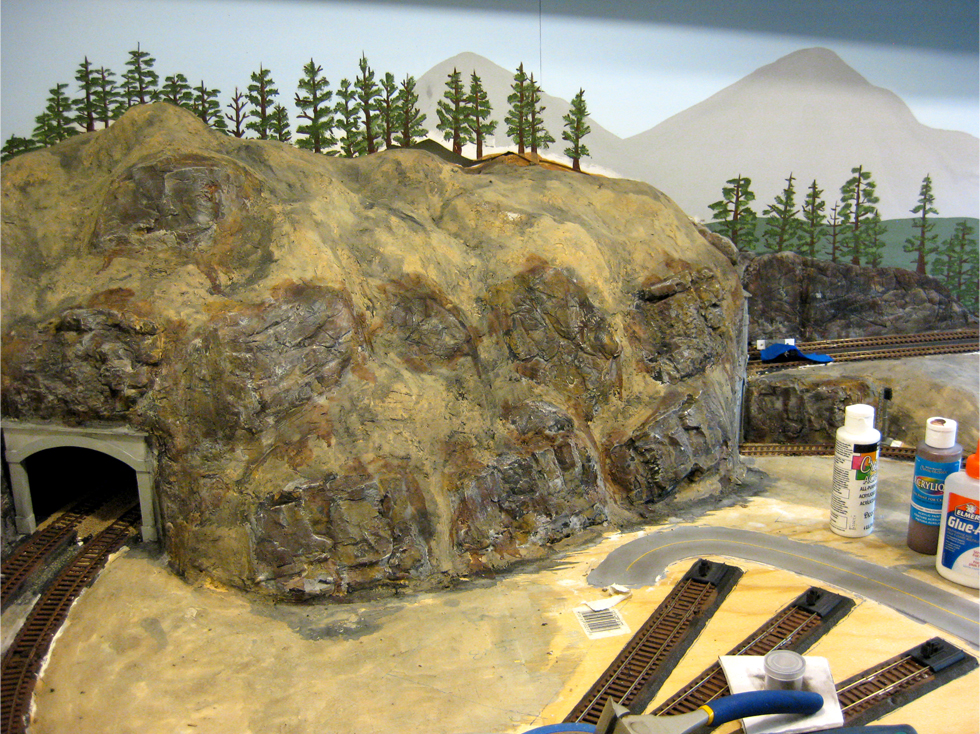Painting the terrain on my layout was probably the most nerve-racking
experience I’ve encountered so far on this project. I’ve been ready to paint
since I finished all the hard shell scenery back around Christmas, but in
all honesty I was absolutely horrified to paint anything in fear that I
wouldn’t get the look I wanted. After two months, I couldn’t put this task
off any longer.
Like common practice, I did a lot of research to find the best way to paint
terrain and rocks. I found the easiest and most common method to colour
plaster rock castings was to use a series of earth-coloured acrylic paint
washes using the “leopard spotting” technique, as explained on Woodland
Scenic’s website.
Before I could start painting the rock castings, I needed to paint the hard
shell scenery. For this I used inexpensive tan coloured acrylic paint,
thinned about 50% with water for better coverage. Make sure to use cheap
foam brushes for this step and not expensive ones, as the plaster will tear
the foam up pretty fast, regardless of how much you paid for the
brush.
I decided I wanted the colour of my rock outcroppings to be rich with lots
of texture, so I opted for dark browns, yellows, and grays. I used the
leopard spotting technique to paint the rock castings using thinned washes
of acrylic paint. The first colour I applied to the rock castings was burnt
umber, literally applying it randomly just like leopard spots. A narrow foam
brush works best for this application.
The second colour I applied was yellow. To give the yellow more of an
earth-tone, I mixed with my leftover burnt umber wash until I achieved the
desired colour. I then applied this second wash in the same random manor as
before, making sure to not over-apply any one colour.
To blend everything together, I did a third and final wash of black, this
time applying liberal amounts of wash over the entire surface, making sure
no uncovered plaster was showing through. The black wash blends all the
colours and settles into all the small cracks and crevices, highlighting the
rock’s texture and profile. I made sure I kept the black wash very light, as
it would be difficult to lighten the terrain if it turned out too dark.
Instead, I used light washes, applying more washes to achieve a darker
look.
As most of the tan colour that I first applied will eventually be covered
with foam ground cover, I used the same black wash in these areas as well in
hopes of making the ground a little more realistic. The black wash gives the
tan paint more of a dark clay look, which is similar to the area of Alberta
I live in. Applying the black wash also helped to blend the rock
outcroppings into the rest of the terrain.
The final step was to very lightly dry-brush the rock outcroppings with
white paint. The white paint collects on the high ridges of the rocks,
highlighting them and creates further contrast. At this point I’m still a
little nervous how the final look will turn out, but I keep reminding myself
that there is still ground cover and trees that need to be added, so the
final look might be something completely different.












0 comments